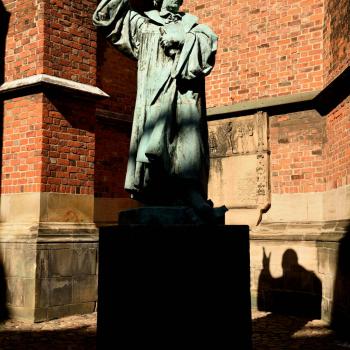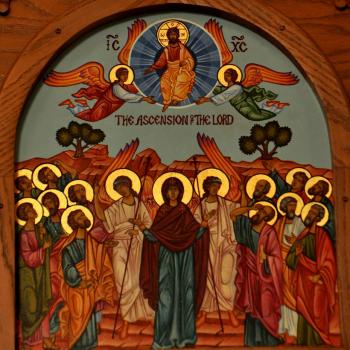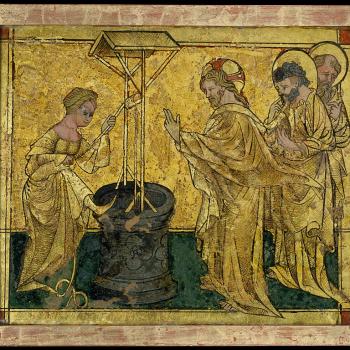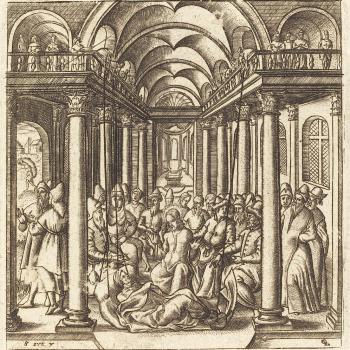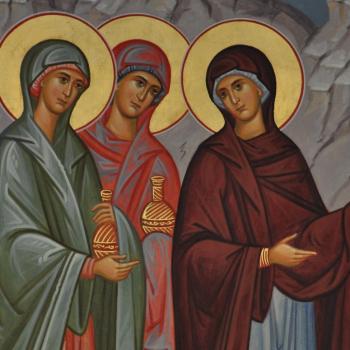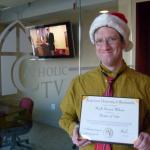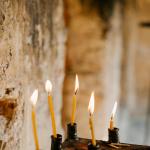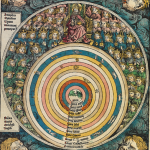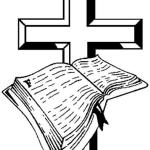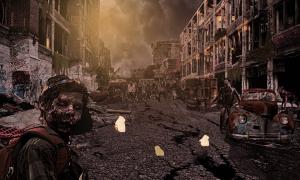 “The last enemy to be destroyed is death” (1 Cor. 15:26 RSV). Death is said to be the final enemy because of what death represents: the annihilation of being, the decomposition and destruction of that which is.
“The last enemy to be destroyed is death” (1 Cor. 15:26 RSV). Death is said to be the final enemy because of what death represents: the annihilation of being, the decomposition and destruction of that which is.
The kingdom of death is the kingdom of corruption and decay, the kingdom of the half-life, quarter-life, and no-life. It seeks to bring everything which exists into the underwhelming emptiness of the void, the nihilistic annihilation of all things.
That which is tainted with death, that which has the emptiness of the void of being touching their inner core, finds the kingdom of death seeking them out, wanting to make them one with it in its rejection of all being.
The principle behind death, therefore, is not the mere absence of life, but the corruption and destruction of being itself. Physical death manifests this destruction of being as that which held life finds life cut off form it. True death of a living person is spiritual death; they suffer more than the loss of their life, but the wholeness of their very being. Their inner spiritual core has been taken away from them. They no longer have a proper center of being, as that center is turned into a void which acts like a black hole in their life, sucking everything good the person has within it, as the void seeks to overcome being by destroying everything which it touches. This is why spiritual death, more than physical death, must be understood as the evil which we face; indeed, physical death sometimes can serve as a stopping point for the spiritual death, allowing physical death serve as a good which counters the spiritual corruption of being, using the power of death against itself, foreshadowing the final overcoming of death by death in the passion and resurrection of Jesus Christ.
Horror stories, whether in print or in film, often serve to demonstrate the kingdom of death and all its power. In them, we see various representatives of the kingdom of the dead, various forms of death, coming out from the kingdom of the grave, seeking out the living, seeking either to outright destroy the living, snuffing out the Spirit of Life from the world, or else, to place its insidious corruption into the living to make them one with the kingdom of the dead. Mummies, zombies, ghouls, ghosts, and vampires all demonstrate, in their own way, a different path of the contagion of death; they are figures of horror because they are the servants and knights and principalities of the grave coming to the world to make the empire of the dead that much larger. Zombies and ghouls have less of a semblance of life, while ghosts and vampires represent those who hold some remaining sparks of life, some remaining sparks of personality, despite being among the dead and no longer truly alive. To be a vampire is to be among the living dead, to be lifeless and yet without rest, to be tortured by the living, to seek out the living and take the energy of the living so as to imitate and feel, for a few brief moments, the last remnants of life flowing through the veins: life is sacrificed in others for the simulacrum of life in the vampire.
Truly, this is also what makes reanimating the dead to also be a thing of horror: such reanimation, whether or not it brings the dead back to life, or only brings it to the semblance of life, continues to have the touch of death always upon the body of the one who has been “brought back to life.” The figure is not entirely alive; the taint of death remains and true spiritual life, the truly transformed life given in the resurrection of the dead, remains outside the grasp of such a mortal shell. This exactly was the criticism given to Fedorov by Orthodox theologians: they recognized the good Christian desires behind his notion of establishing a “resurrection science,” of bringing back the dead ancestors as a “common task” of the living, but they also saw all that what was lost in such a science would be the deifying grace which transformed the resurrected person so that no longer was any taint of death within them. Fedorov’s principle desire and end was Christian; the morality certainly was Christian, but it was also Pelagian, and so even if some sort of reanimation of the dead is possible, it would only establish a prolonging of mortality and not the true eternal life which transcends death that Christ brings to the world.[1] “By death he trampled death and to those in the graves he granted life eternal.” Jesus, in his passion, brings about the true conquest of death, destroys the final enemy, indeed, removes the horror of death itself by the way he reconfigured creation.
Death is the final enemy. The kingdom of death continues to be all around us. The kingdom of death has power in us and against us so long as we allow its taint, the taint of sin, to abide in us. It beckons to us. We instantly recognize the horror of it when we see it touching us. We create myths and stories representing the various levels of spiritual and physical decay, various kinds of deconstruction undergoing being itself, to help us understand the various ways death comes before us and seeks to destroy us. Death desires to come into the world and use its power to destroy life itself. But the power of life is greater; the giver of life could, and indeed did, use death to be its own undoing. Death met with death and found itself deconstructed: when death is overcome by death, all there is left is life, the life of the resurrection, the joy of being itself.
The horror of death is no longer the end of the story. It is now only the beginning of the greater story which leads to eternal life.
[IMG Zombies in a City [CC0 Creative Commons] via pixabay]
[1] J.R.R. Tolkien, understanding this principle, saw the horror of temporal immortality, which he represented with the dread condition of the ring-wraiths.
Stay in touch! Like A Little Bit of Nothing on Facebook






